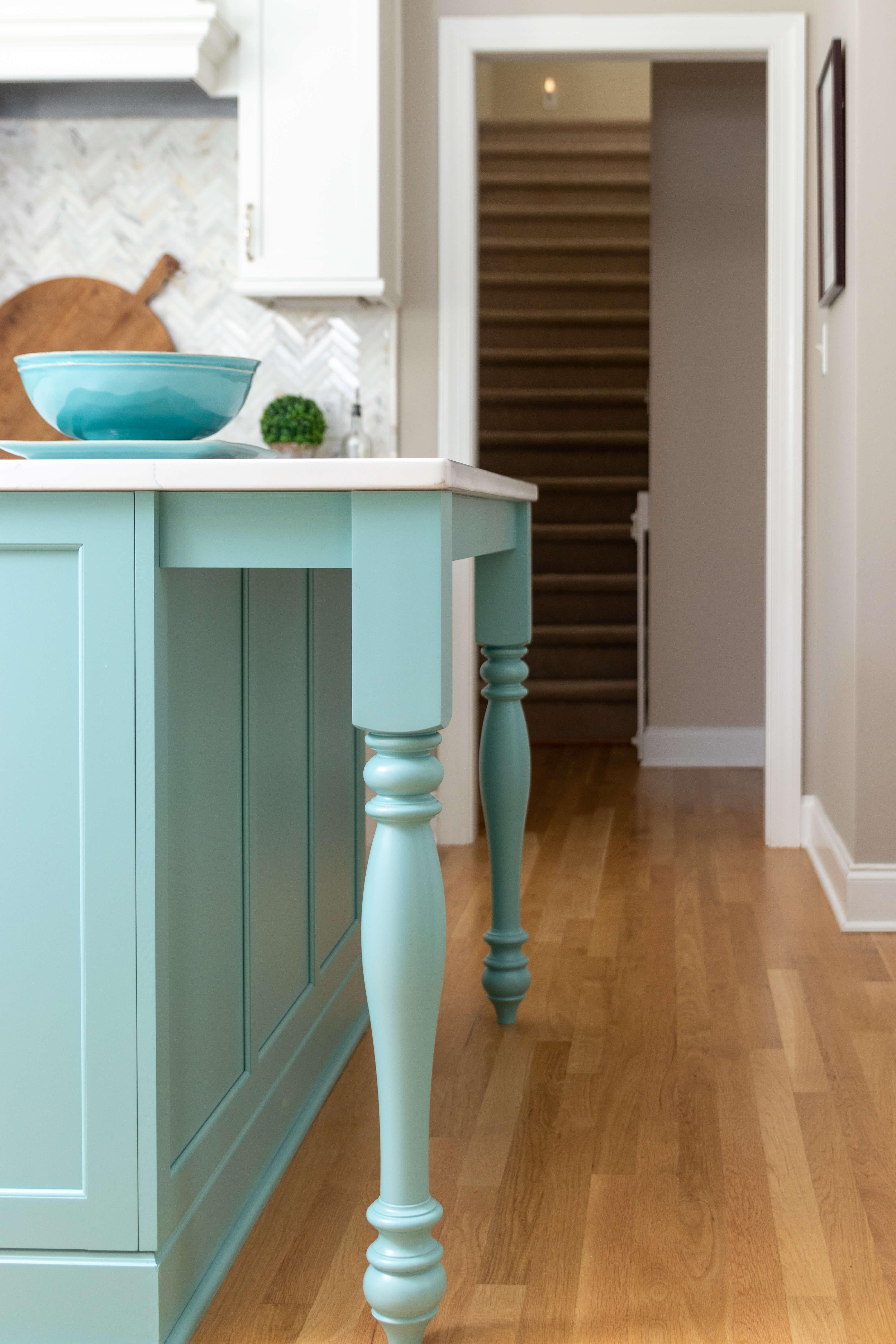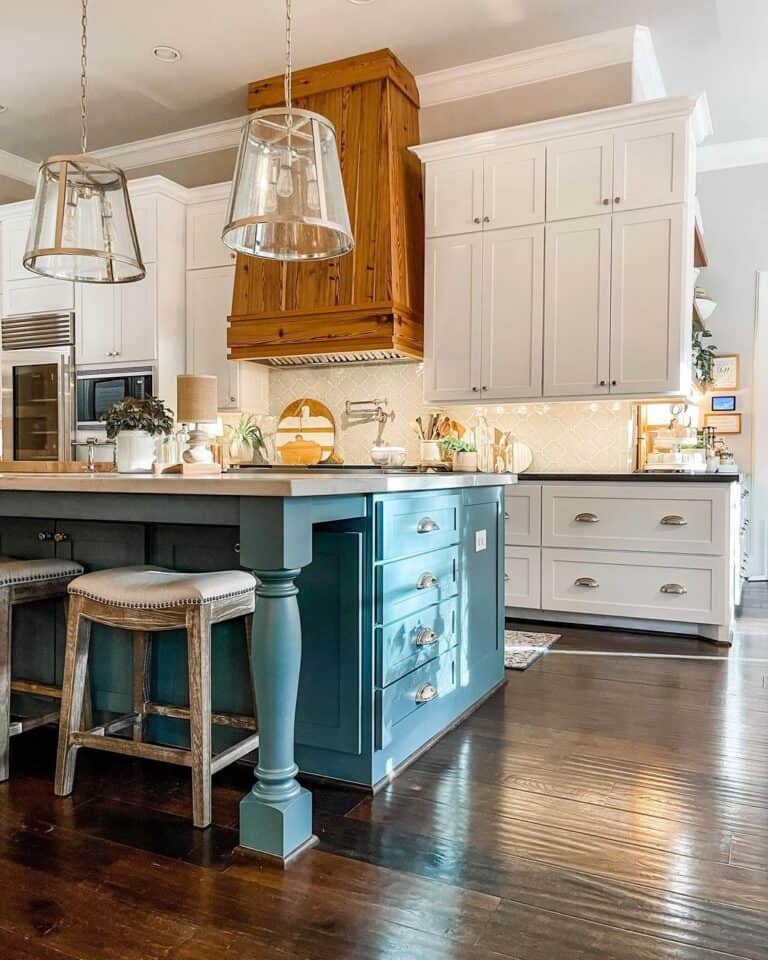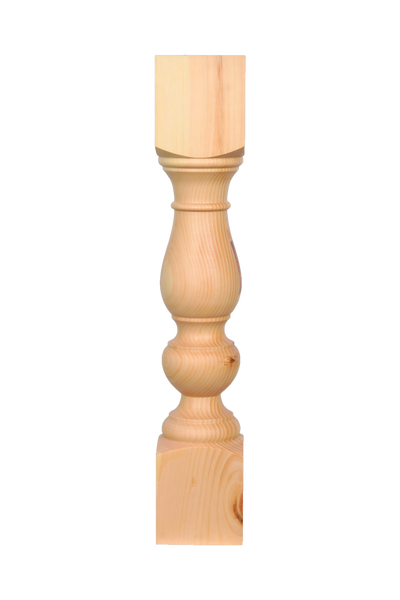Kitchen Island Legs: Improve Your Kitchen with Strong Assistance
Kitchen Island Legs: Improve Your Kitchen with Strong Assistance
Blog Article
Necessary Tips for Choosing the Perfect Table for Your Kitchen Area
Selecting the excellent table for your cooking area is more than just an issue of preference; it requires a complete understanding of your space and needs. Begin by measuring your offered space to make sure enough clearance for motion. The form of the table plays a pivotal duty; while rectangle-shaped tables suit larger locations, rounded ones foster affection, and extendable options use flexibility. Product choice is similarly critical, with woods providing toughness and glass loaning a contemporary touch. Finally, the table ought to integrate with your cooking area's aesthetics and fit your family pleasantly. What various other variables might influence this important choice?
Measure Your Area
Picking the perfect table starts with a thorough analysis of your offered space. This foundational action makes sure that the table not just fits pleasantly within the room however likewise complements the overall design and functionality of your dining area. Begin by measuring the measurements of the room, thinking about entrances, home windows, and any existing furnishings. This will help you determine the maximum allowable size for your dining table.
Take into consideration the flow of movement around the table. It is vital to leave adequate area for chairs to be taken out and for people to move around the table without obstruction. A basic general rule is to permit at the very least 36 inches of clearance from the side of the table to the local wall surface or furniture piece. This makes sure convenience of accessibility and convenience during meals.
Furthermore, think of the number of individuals you usually delight and whether you require added area for visitors. Choosing an extendable table can give adaptability, permitting you to accommodate varying numbers of diners. By accurately determining your room, you lay the foundation for choosing a dining table that boosts both the visual appeals and performance of your dining location.
Choose the Right Forming

On the various other hand, round tables are excellent for smaller sized kitchens or intimate celebrations, as they promote discussion by allowing every person to deal with each various other. They also supply a feeling of coziness and can fit well in tighter rooms as a result of their absence of sharp corners. Oval tables supply the most effective of both globes, combining the length of rectangle-shaped tables with the affection of round ones, making them versatile for different settings.
Square tables are an additional choice, particularly suited for square-shaped areas. They create a contemporary and symmetrical look, fostering an equivalent eating experience for all seated. They may be much less useful for bigger celebrations unless they come with extensions. Eventually, the shape you select need to align with your room dimensions and way of living to make certain both form and feature.
Product Considerations
When choosing a table, product factors to consider are vital in determining the table's sturdiness, upkeep requirements, and overall aesthetic. Timber is a traditional option, offering read ageless allure and robustness. Hardwoods like walnut, oak, and mahogany are particularly durable, though they can be expensive. kitchen island legs. Softwoods, such as ache, are much more budget friendly but might be vulnerable to dents and scratches.
Glass-topped tables provide a modern-day, streamlined look and can make a room appear bigger due to their openness. They need regular cleaning to avoid spots and fingerprints. In addition, toughened up glass is advised for its additional strength and security.

Finally, composite materials like MDF (Medium-Density Fiber board) or plywood are affordable choices. These products can simulate the look of strong timber yet may not supply the exact same long life. They are generally much easier to clean yet can be prone to water damage if not effectively sealed.
Ultimately, the selection of product ought to line up with your kitchen area's style, your way of life needs, and your budget plan restraints. (kitchen island legs)
Seating Ability and Comfort
How do you figure out the ideal seating capacity and convenience for your dining table? For a family of 4, a rectangular table of 48 inches long or a round table with a 48-inch size is generally adequate.
Comfort is just as essential. The elevation of the table must ideally be around 30 inches, offering a well balanced ergonomic position for seated diners. Chairs must have a seat elevation of 18 to 20 inches to ensure a comfortable dining posture. Additionally, take into consideration the chair layout; upholstered seats and encouraging backrests can enhance eating comfort substantially, specifically throughout extended dishes.
Design and Aesthetics
Selecting a dining table that matches your design and aesthetics includes balancing personal taste with the existing decor of your dining room. The dining table is usually the focal point of the cooking area, and its style ought to complement the total style of the space. Whether your cooking area boasts a contemporary, minimalist appearance or a rustic, farmhouse beauty, the table you choose need to harmonize with these aspects to create a natural and inviting environment.
Consider materials thoroughly; timber uses an ageless allure and can vary from abundant mahogany for a typical aim to lighter oak for a modern feel. Steel and glass tables, on the various other hand, can introduce a streamlined, commercial edge to your kitchen area. Do not forget the table's form-- rectangular tables are versatile and traditional, while round and oblong options can promote a more see post intimate eating experience.
Additionally, pay close focus to surfaces and information. A distressed coating may include personality and heat, whereas a shiny surface can add to a clean, contemporary visual. Eventually, your table must not just in shape seamlessly right into your kitchen area's design but additionally mirror your personal design, raising the room both functionally and aesthetically.
Conclusion
Finally, picking the excellent table for a kitchen demands mindful analysis of space, shape, product, seating capability, and aesthetic harmony. Making sure a minimal clearance of 36 inches promotes comfy activity, while the selection of form improves spatial characteristics. Product choice impacts sturdiness and layout, making it vital to straighten with the kitchen area's overall visual. Inevitably, a well-chosen table promotes a welcoming atmosphere and accommodates the home conveniently, hence enhancing the dining experience.

When choosing an eating table, material factors to consider are critical in figuring out the table's toughness, upkeep demands, and total visual. For a family members of four, a rectangular table of 48 inches long or a round table with a 48-inch diameter is typically sufficient.
Do not ignore the table's form-- rectangle-shaped tables are flexible and traditional, while round and oblong alternatives can cultivate a more intimate dining experience. kitchen island legs.
Report this page